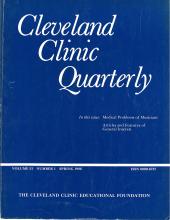ABSTRACT
Four experienced brass-instrument players and one rank novice whistle player were studied to determine the relative contribution of the thorax and abdomen to expiration during repetitive playing of a simple refrain. Respiratory inductive plethysmography was used to record volume changes of the chest cage and abdomen separately and to measure end-inspiratory lung volumes preceding each chorus. There was considerable variation between performers in the timing and magnitude of thoracic and abdominal contributions to expiration. These variations were likely due to the physical requirements of the different musical instruments. End-inspiratory lung volumes were much more consistent in the skilled players than in the novice.
- Received April 1985.
- Accepted September 1985.
- Copyright © 1986 The Cleveland Clinic Foundation. All Rights Reserved.






